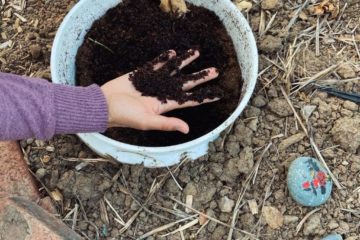Written by Alexandra Kaminski, Grant Writing & Development Intern
Each Green Corner’s Food Explorers program functions at our Living Campus partner sites, a program in which EGC collaborates with schools and community partners to design garden-centered outdoor educational areas and subsequently use these sites to educate and engage students with the maintenance and harvesting of produce to donate to local food banks.
The food explorers program is a Common Core—and California health education—aligned interactive curriculum created for educators, children, and families. The program seeks to engage young students to build connections with their food sources and provide a foundation for nutritional wellness and an understanding of food systems. Our lesson plans include material on the production, processing, distribution, consumption, and disposal of our foods as well as food insecurity and justice. Introducing children to these concepts beginning at a young age is not only to provide nutrition education and food literacy but to foster a connection between the kids and their community and to the greater world connected by our food systems. Part of the curriculum is the Living Campus itself, where outdoor educational spaces have been shown to have an impact on student mental health and academic engagement (Baula, A. 2021).
Portola Elementary Student planting seeds at a Portola Workday that were later planted at Portola and other EGC gardens. (July 15, 2023. Photo taken by EGC volunteer, Taylor).
In a study conducted by the Institute of Medicine requested by the Food and Nutrition Service of the USDA looking to help students make healthy choices through nutrition education and physical activity within schools, most schools devote less time to nutrition education than the suggested amount required to alter behaviors. One of the barriers identified was a lack of access by educators to reliable and comprehensive educational materials, which Food Explorers seeks to provide (Institute of Medicine, 2013). We are constantly formulating new lesson plans to communicate progressional ideas on food systems and food justice in response to the feedback we receive from educators and the observed enjoyment of students.
Three alumni of Arundel elementary returned to volunteer in the garden. (July 13, 2023. Photo taken by EGC volunteer, Taylor).
Check Out These Resources to Learn More About Outdoor and Nutrition Education!
Murimi, M. et al. (2018). Factors that contribute to effective nutrition education interventions in children: a systematic review. Nutrition Reviews, 76(8). p. 553-580.
Information on University of Wisconsin-Stevens Point’s commitment to outdoor education: https://www.uwsp.edu/wcee/wcee/leaf/school-grounds/
Plant a Seed and See What Grows Foundation: https://seewhatgrows.org/key-benefits-outdoor-learning-education-children-teens/
Wonder Valley Outdoor Education Center: https://wondervalleyoe.com/blog/why-outdoor-education-is-essential-for-kids/
CDC Information on Nutrition Education: https://www.cdc.gov/healthyschools/nutrition/school_nutrition_education.htm#:~:text=Research%20shows%20that%20nutrition%20education,education%20into%20the%20existing%20schedule.
Let’s Eat Healthy: https://www.healthyeating.org/blog/detail/nutrition-education-in-schools-supports-health
Citations
Bauld, Andrew. (2021). Make Outdoor Learning Your Plan A. Harvard Graduate School of Education. https://www.gse.harvard.edu/ideas/usable-knowledge/21/08/make-outdoor-learning-your-plan#:~:text=Research%20has%20shown%20that%20outdoor,interactions%20with%20fewer%20disciplinary%20issues.
Institute of Medicine. (2013). Nutrition Education in the K-12 Curriculum: The Role of National Standards: Workshop Summary. Washington, DC: The National Academies Press. https://doi.org/10.17226/18361.


0 Comments